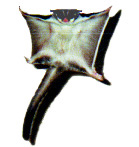Australian Research on the
Diets Fed to Gliders in Captivity
Researched and Submitted by Tammy Johnson
There's
lots of controversy on what to feed gliders. Many diets, that confused
the veteren owners as well as the new owners. We all worry about our gliders
diet. In the midst of all the controversy, Tammy took it upon herself
to do some research and contact some zoos in Australia and her local zoo
to find out what they feed their gliders in captivity. Below is the info,she
had aquired during that research. Tammy, Thank you, for all of your hard
work, so we all could benefit from it. I also want to take this chance,
to thank Ruth for aquiring the Leadbeaters Diet many years ago and making
it available to us here in the states.
Diet 1
Diet 2
Diet 3
Diet 4
If you notice , the ratio for these
diets are a 50% ratio, That ratio is what is recommended by zookeepers
in Australia, as well as here in the states. The minimum ratio is 33% not
to exceed 50% proteins.
 Diet
1
Diet
1
Captive Diet: Diet 1
50% Leadbeaters Mix
50% Insectivore/Carnivore Diet
A captive diet based on field research
and consultation with Australian zookeepers, veterinarians and naturalists
has been used with success. Sugar glider owners should feed fresh portions
in the evening, and chop items together to reduce only favorite foods being
selected. Acceptable treats include meats, diced fruits with multiple vitamin/mineral
powder, bee pollen, worms, crickets, various insects ( gut loaded with
high quality cricket diet with additional calcium). Treats should be limited
to 5% of daily intake.
Leadbeaters Mix:
150 ml warm water (5 ounces?)
150 ml honey (5 ounces?)
1 shelled boiled egg.
25 grams high protein baby cereal(
0.88 ounces?)
1 teaspoon vitamin/mineral supplement.
mix warm water and honey. In seperate
container, blend egg until homogenized. Gradually add honey/water, then
vitamin powder, then the baby cereal, blending after each addition until
smooth. Keep refridgerated until served.
 Diet
2
Diet
2
Sugar Glider Diet: Diet 2
Feed a diet containing a variety
of foods appropriate for Insectivores/Carnivores ( at least 50% of total
intake particularly if they are active breeders) along with sources of
fruit sugars, preferably in the form of a sap or nectar. Feed fresh portions
in the evening. In the absence of a very large variety of insects, a zoo
formula insectivore diet can be used, but several pet-industry raised(
pet industry quality-fed a commercial cricket diet or enriched feed- or
the owner should dust all insects with complete vit/min powder) insects
including mealworms large/small), crickets, waxworms, moths, spiders, etc.
need to be offered. Portion size for one glider is roughly a tablespoon
of insects, and a tablespoon of nectar (leadbeaters mix) plus fresh water
available always. This may be increased or decreased depending on activity
level, reproduction, or growth conditions. The amount of insects equal
to about a tablespoon of volume is about 1 dozen small mealworms or four
small,two large,two waxworms,etc. If fruit is fed as a treat, small bits
of a variety should be "chopped together" to decrease the ability of the
glider to pick out only the favorite parts, and a small amount of multiple
vitamin/mineral powder mixed through it as well. It might be advisable
to add bee pollen dusted over any fruit given. It is not proven that the
commercial lorikeet nectars are adequate.
Suggested Diet: Leadbeaters Mix
50%, feed in the evenings 1 glider portion.
Insectivore/Carnivore Diet 50%
Example: Nebraska Feline Diet, Mazuri Omnivore Diet or Zupreem Diet.
 Diet
3
Diet
3
Chicago Zoo Diet: Diet 3
Recipe feeds one animal.
1 Teaspoon-sized piece each, chopped:
apple, carrot, sweet potato, banana.
1 tsp. leaf lettuce.
1/2 boiled egg yolk.
1 tablespoon Nebraska Feline Diet.(
or other good quality zoo diet such as Zupreem or Mazuri Omnivore Diet.
1 dozen mealworms.
 Diet
4
Diet
4
Taronga
Zoo Diet: Diet 4
The above link will take you to
the Taronga Zoo diet on Ruth's
Sugar Glider Page
To return to your refering page click your back button on your browser

Sugar
Glider Info
 Diet
1
Diet
1
 Diet
2
Diet
2
 Diet
3
Diet
3
 Diet
4
Diet
4